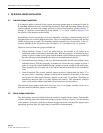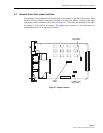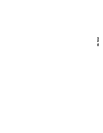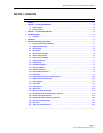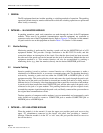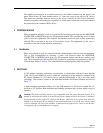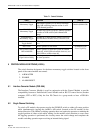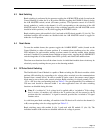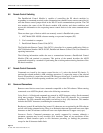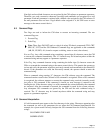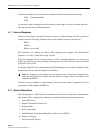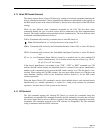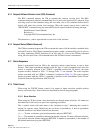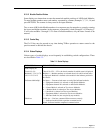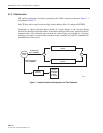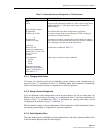
ADCP-50-304 • Issue 19 • June 1999 • Section 7: Operation
Page 7-6
© 1999, ADC Telecommunications, Inc.
6.6 Remote Control Switching
The PatchSwitch Control Module is capable of controlling the PS chassis modules by
responding to commands received on the communications channel from a remote control device
with the remote control jumper block in the RS-422 serial communications position. The CM
also monitors the status of the PS chassis module A/B switches and alarm conditions and
reports this information to the requesting remote control device via the same communications
channel.
There are three types of devices which can remotely control a PatchSwitch system:
1. ADC Model SSN-100589 software running on a personal computer (PC)
2. User’s terminal or computer
3. PatchSwitch Remote Control Unit (RCU)
The PatchSwitch Remote Control Unit (RCU) is described in a separate publication. Refer to
ADC Publication Number ADCP-50-302, PatchSwitch Remote Control Unit User Manual for
operating instructions.
The following information enables the user to communicate between a PatchSwitch Control
Module (CM) and terminal or computer. This portion of the manual describes the ASCII
commands executed by a terminal for performing the switching and monitoring functions of the
PS chassis modules.
6.7 Remote Control Commands
Commands are issued by the remote control device to: l) select the desired PS chassis; 2)
perform the selected module(s) AIB switching operations; 3) request the status of the selected
chassis PS modules; 4) request the selected CM software revision level; 5) enable/ disable alarm
reporting; 6) clear all alarm reporting conditions; and 7) de-select PS chassis.
6.8 Command Conventions
Remote control devices must issue commands compatible to the CM software. When entering
commands on an ASCII keyboard, observe the following conventions.
String Entries.
All keyboard commands are entered in ASCII character strings. Each command
string must contain a Carriage Return (CR) and a Line Feed (LF) character for a command
terminator. The CM command string buffer can hold up to forty (40) characters. This number
includes the CR/LF characters, terminating the command string.
Backspace (control-H) and delete-line (control-U) characters are recognized by the CM software
and are valid in the command string. There is no distinction between upper and lower case alpha
characters as the CM software converts all lower case alpha characters to upper case (caps).
Parameter Entries
. Command parameters are usually separated by commas, although a
parameter separator may be any non-digit (0-9) character. There are no restrictions on the
number of blank character spaces or zero characters preceding (or leading) the parameter,
except for the 40 character buffer limit.



